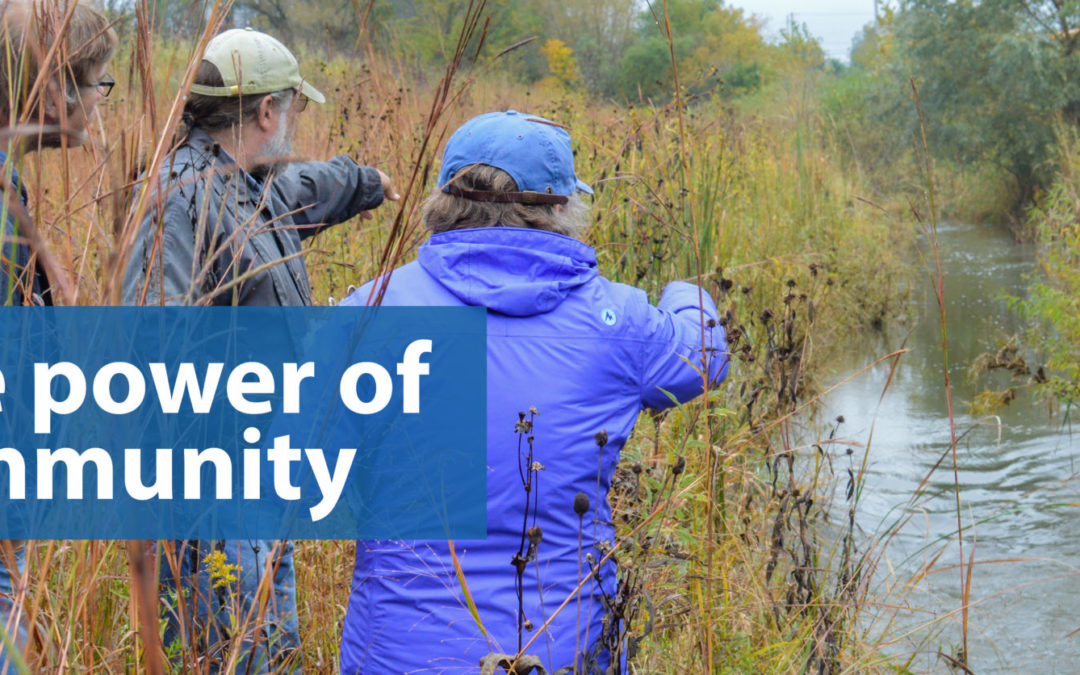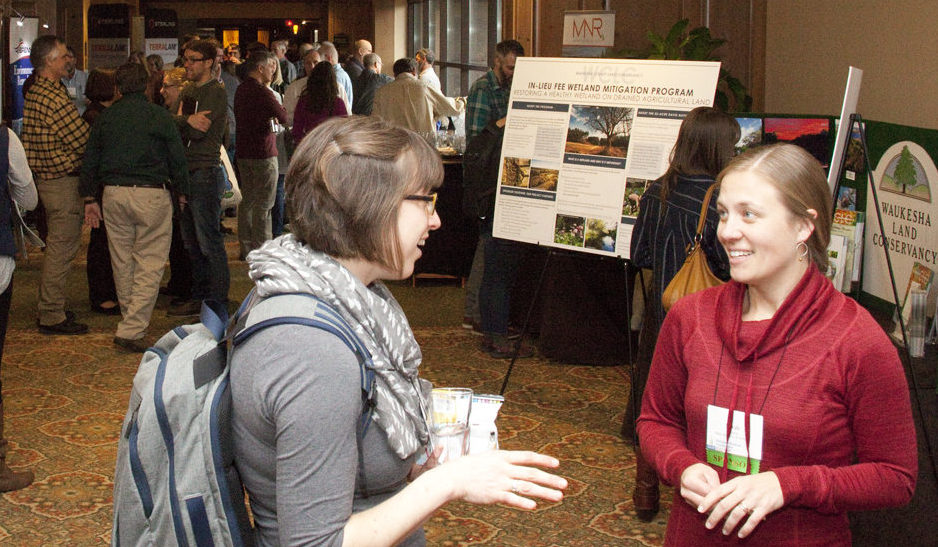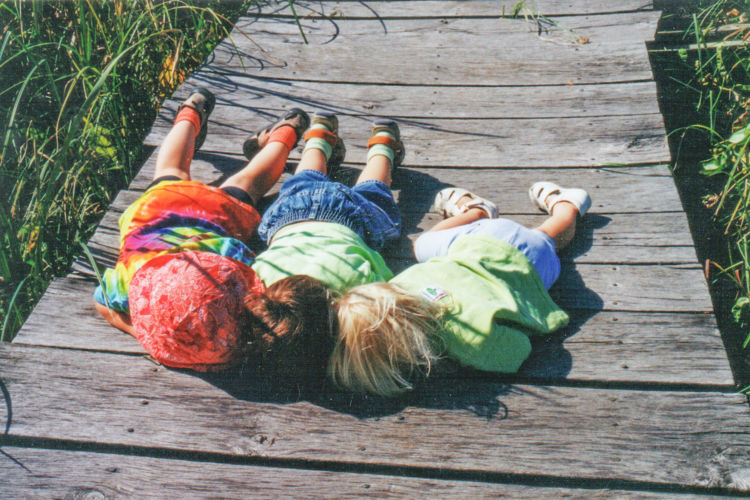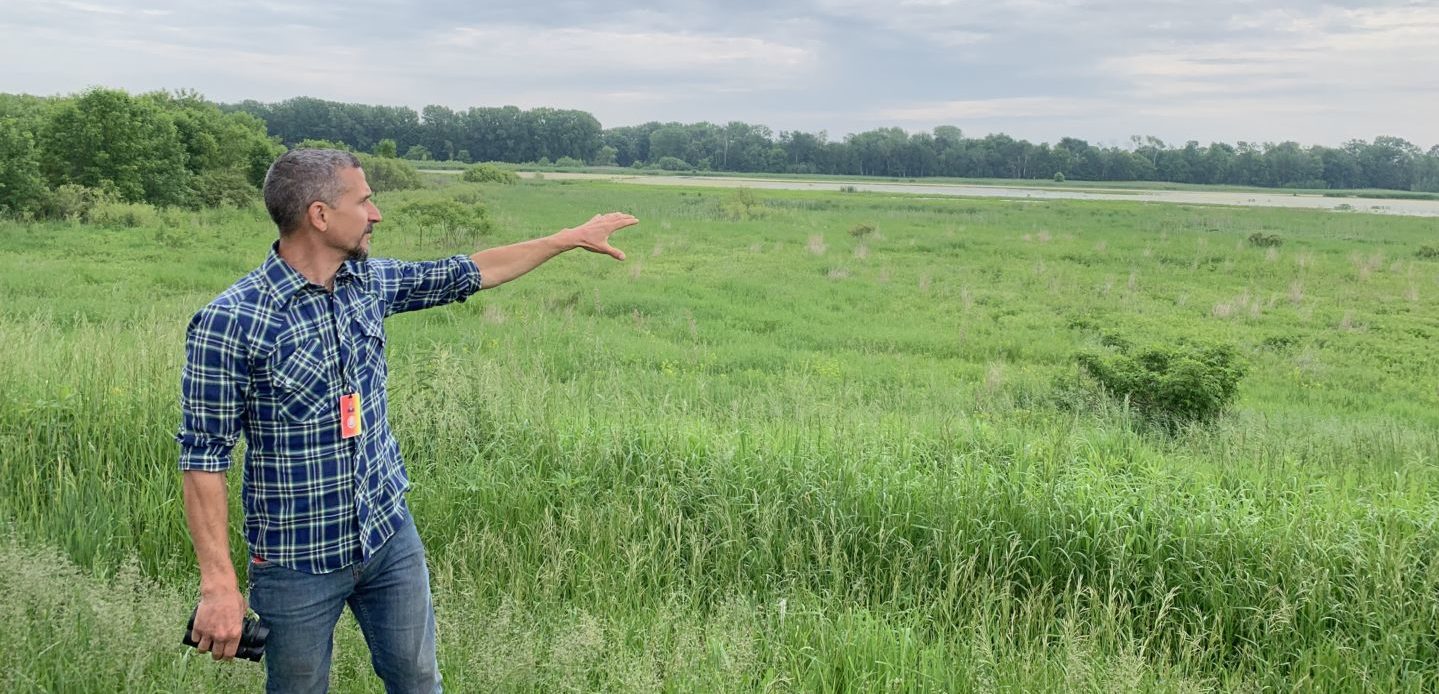Every year, Wetland Science Conference participants remark on how important the annual gathering is for networking and fostering a sense of our shared work as a community. But what does it mean to be a community? Who are “we,” and what is the role each of us play in this community’s wetland conservation work? In honor of our fiftieth anniversary, Wisconsin Wetlands Association’s Katie Beilfuss presented a talk entitled, “The Power of Community,” during the 2019 Wetland Science Conference, reprised below.
Sometimes in our work, we make reference to Wisconsin’s wetland community. Are we a community? And just what does that mean? How can it inspire us and make our work more powerful and effective?
Just what is “community”?
Merriam Webster provides these two definitions:
com·mu·ni·ty | \\\\\\\\ kə-ˈmyü-nə-tē, noun
- a group of people living in the same place or having a particular characteristic in common.
“the scientific community” - a feeling of fellowship with others, as a result of sharing common attitudes, interests, and goals.
“the sense of community”
We are a group of people living generally in the upper Midwest who have an interest in wetlands in common. I also think we share three other ideas: 1) we think wetlands are important; 2) we respect science; and 3) we think people are part of the equation—we want healthy, strong, safe communities. I think we have that first definition covered.
The second definition is a little squirrelier. What is a “feeling of fellowship?”
I think we have this in spades. I see it at the Wetland Science Conference every year. And I read it in the conference evaluations every year—comments from almost every attendee about the importance of this conference for networking and relationship building. And comments about the importance of the conference for buoying up spirits when we spend too much time struggling with problems or fighting battles, and not enough time thinking about the great resource we work to protect and the great group of people with whom we share this mission.
But who are “we”? We asked everyone who registered for the 2019 conference a few questions help us get a little better idea of this group of people. And here’s what you told us:
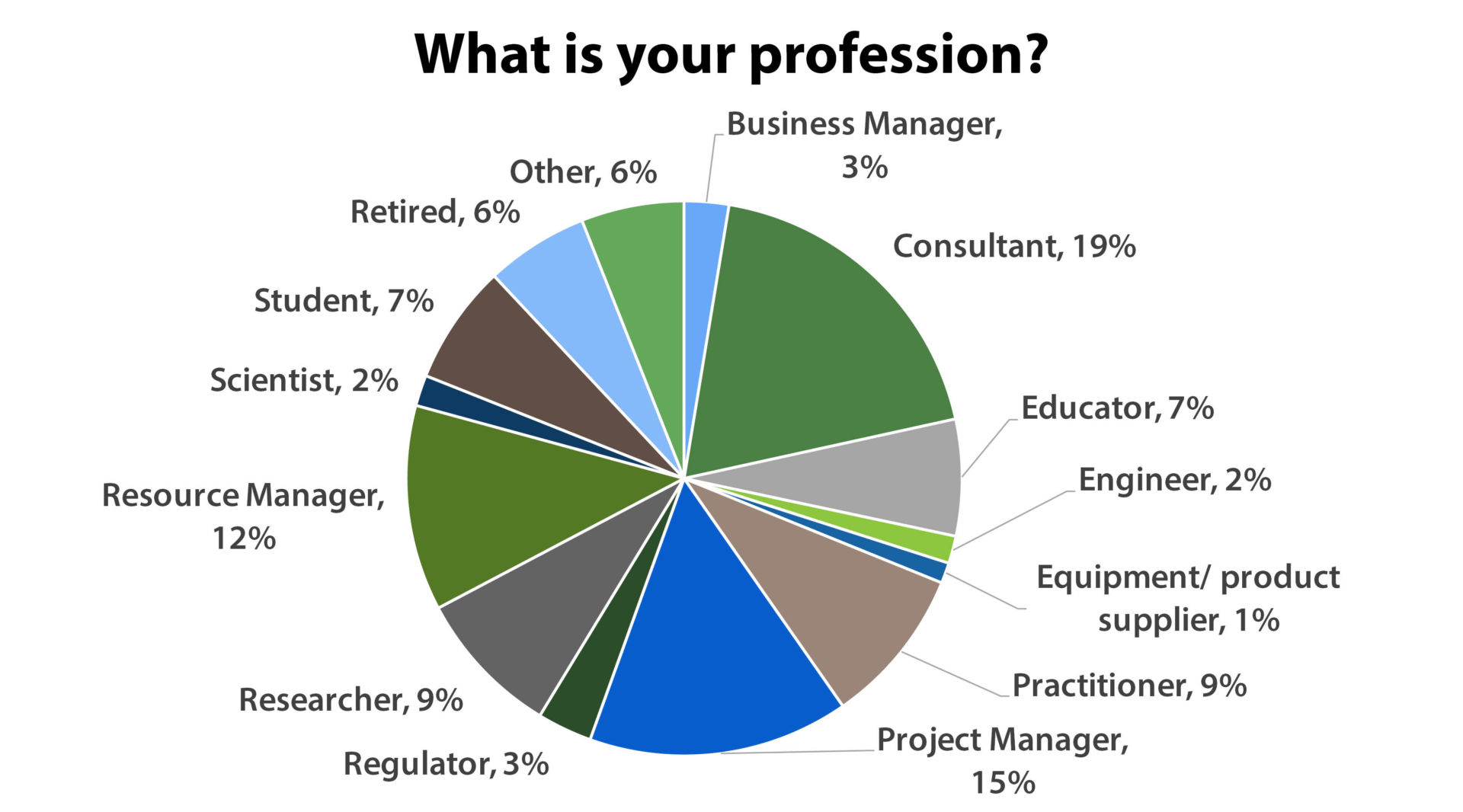
We do a lot of different jobs. What each of these pie slices represents isn’t as important as the fact that there are a lot of different slices. Some of you are consultants, practitioners, regulators, researchers, resource managers, business managers, and more. It’s also important to note that many people listed more than one profession for themselves when they answered the question—many of us wear more than one “hat” in our work. About 330 people answered most of our survey questions and we had 501 “votes” for this question. The important take-home message here is that we come from a lot of different perspectives and we do a lot of different jobs.
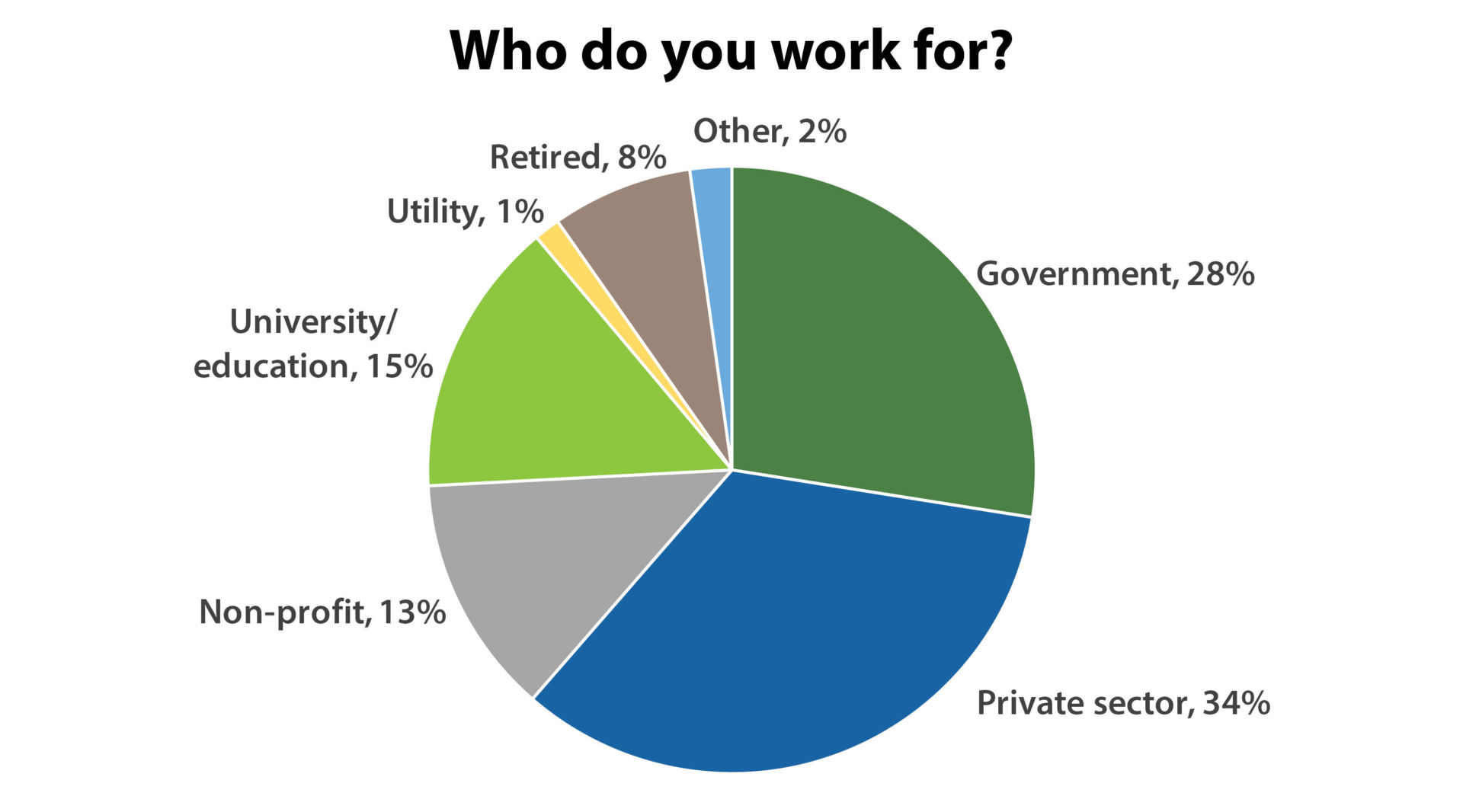
We also asked who you work for. About a third of us work for local, state, federal or tribal government, a third of us work for the private sector in a consulting firm or other private company, and the remaining third of us work for nonprofits, educational institutions, utilities, and other kinds of employers, or we are retired.
We also wanted to know more about what brought each of us to this work, so we asked you to select which one factor was the most important factor in motivating you to do wetlands work. By far and away the most common motivation was something to do with caring about nature and caring about making our world a better place.
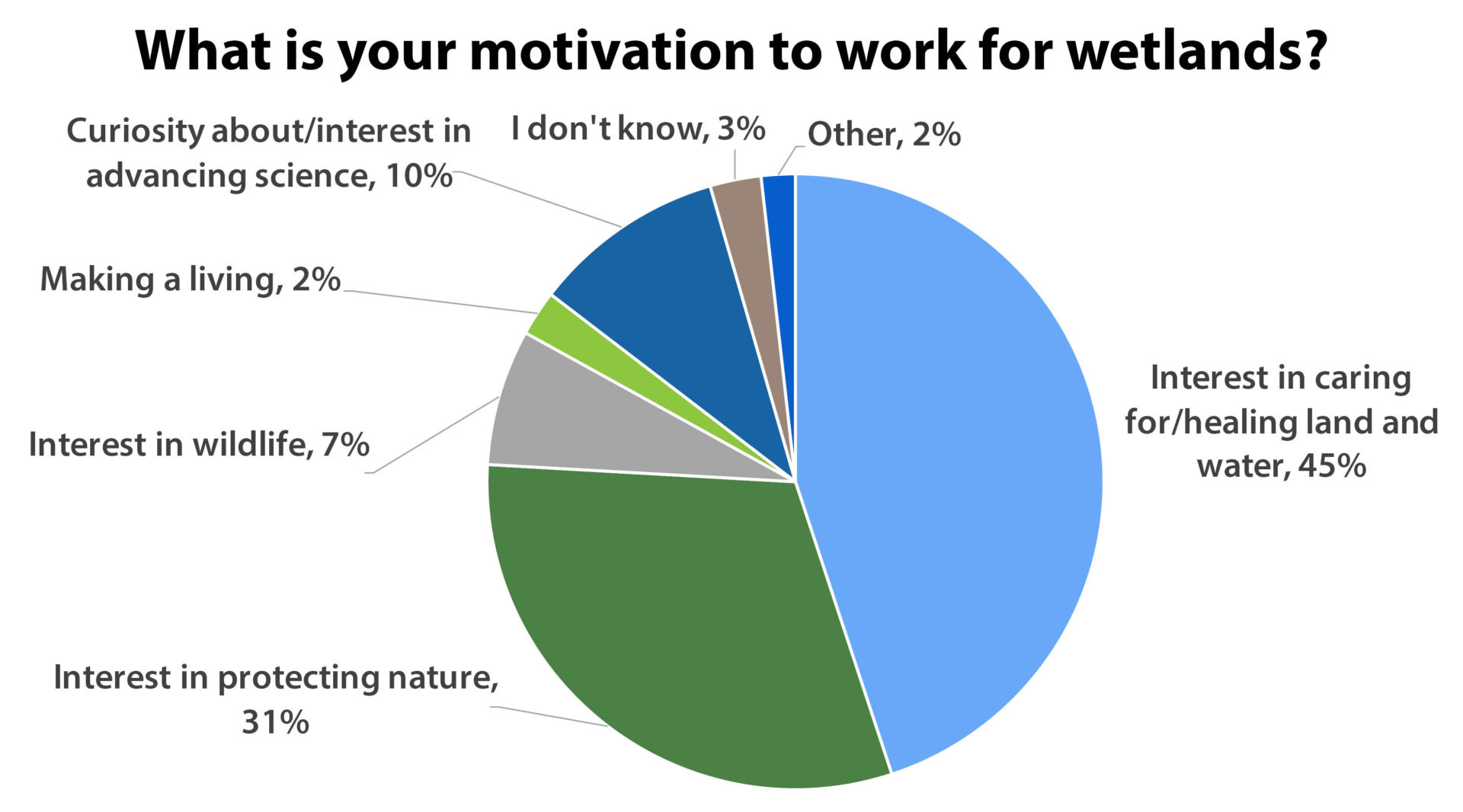
You know it when you see it folks: we have a pretty big “unifying characteristic” if you ask me.
But to describe our shared characteristics, attitudes, or goals does not imply that we are a homogeneous community. We can all work for wetlands but be very different in other ways. We are men, women, older folks, younger folks, conservative folks, progressive folks. We drive trucks and Priuses, ride bikes, motorcycles, and even unicycles. We are dog people, cat people, and people who would (frankly) prefer a nice-looking couch to all that hair.
What does our community do?
We share some characteristics and a sense of fellowship as a community, and we also have our differences. But what does our community do? How do we engage with one another, and what is the result of our collaborations?
We attend the annual Wetland Science Conference. Maybe not every year, but many of us are serial attendees. We have something with this event that most wetland professionals and enthusiasts in other parts of the country do not have. We are lucky. And this conference works for you.
You serve on the conference advisory panel. You moderate sessions and working groups. You teach workshops. You organize and lead field trips. You serve as judges for the student presentation competition. You present talks and posters. And you support the conference as a sponsor or work for an organization who does. The conference would not work without your involvement. And any of you who haven’t yet been involved, we welcome your good ideas and talents to make the Wetland Science Conference interesting, effective, and fun.
We also engage as a community outside of the conference. We come together regarding projects where development proposals have problematic impacts to figure out the best solution. We come together to offer our expertise to help our legislators better understand wetlands and what works and doesn’t work with respect to legislative proposals. We come together for collaborative training and outreach, to design and implement research and monitoring, to partner on restoration projects, and to do many other things that I am sure you could offer from your own experiences.
So we are a community and we support and collaborate with each other. How does that help us do better work?
How can we make our work most effective?
Each of us, within our own work, has to decide what we are going to do for wetlands. But these decisions aren’t always fully in our control. Lots of other factors and people shape what we do, where, and how: our bosses, our clients, funding, the mission of our employer, and our own passions.
But what if you could choose how to focus your time? What would you choose if you could shape the work of others?
We asked you, “If you were responsible for Wisconsin’s on-the-ground wetland conservation strategy, but could only tackle one of the following, which would you choose for the greatest impact?”
- Restore as much wetland acreage as possible
- Restore wetlands to address site-specific water management issues
- Engage in watershed-scale projects to restore healthy hydrology
- “I don’t know”
- “Other” (“all of the above” not allowed!)
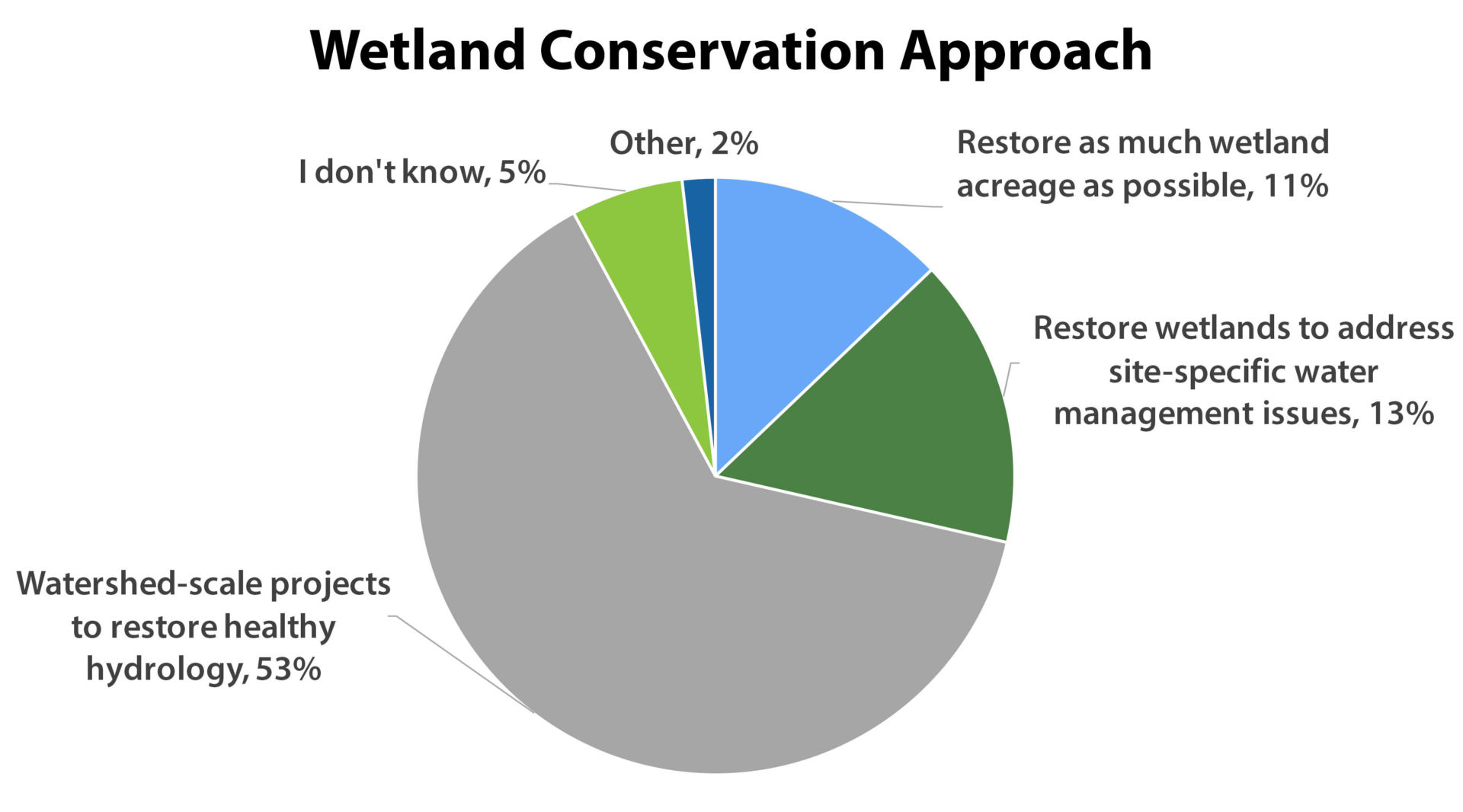
And of course none of the choices we gave you was wrong—we have to restore as much wetland acreage as possible, and we have to restore wetlands to address site-specific water management issues. But the answer the majority of you gave, and our belief at WWA, shows that we collectively understand that wetland conservation at a watershed scale—wherever possible—is critical to achieving our goals. We care about the context in which we’re working. And it’s exciting to think about how different these answers are than they might have been 30 or 50 years ago. We still had to convince people then that wetlands were even important, let alone critical. Our work over that time has changed the way people think about wetlands and approach their conservation. Certainly watershed-based work is harder; it’s more complicated. But you and we know that it’s an essential approach.
We also asked you this question: “What is the most important action needed to achieve the goal you picked in the previous question?”
- Improving techniques we use to restore and manage wetlands
- Supporting community- or watershed-based planning and restoration
- Building partnerships to increase active engagement in wetland conservation
- “I don’t know”
- “Other (“all of the above” not allowed!)
We told you that you could assume legislative and education efforts were a given so you could think beyond those important efforts. And, again, it was a trick question, because we need all of these things to get where we need to be with respect to wetlands.
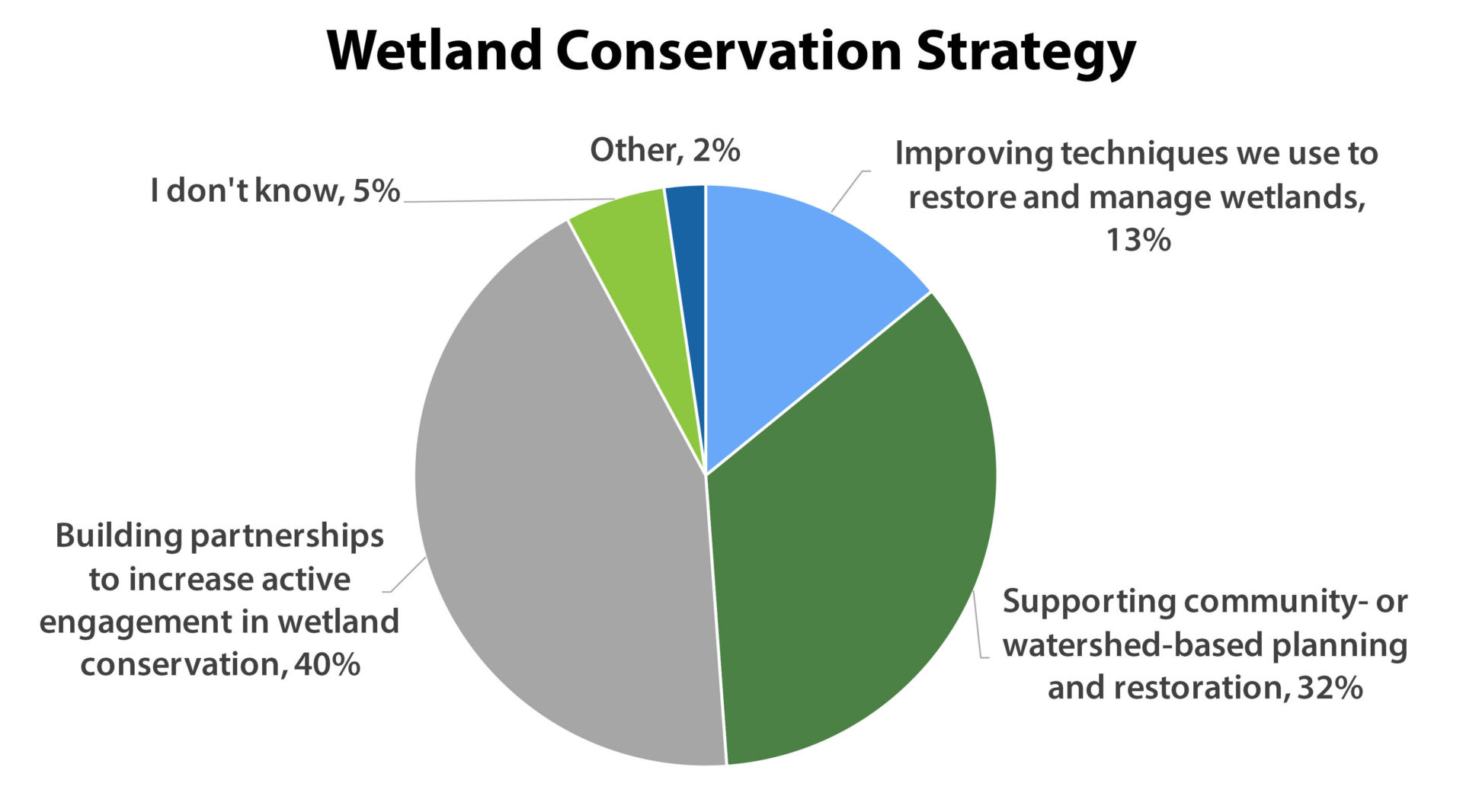
And here’s what you said: More than 2/3 of you chose building partnerships and supporting community- or watershed-based planning and restoration. That is amazing and wonderful!
Your interest in building on community—whether that be community- or watershed-based planning and restoration or building partnerships to increase active engagement in wetland conservation—aligns with what we at WWA think is really critical.
And we know that many of you are already doing this work. Keep it up.
What’s critical and effective for community-based work is our approach. We can’t walk into a community and tell them how to fix their problems. We have to get to know the community. We need to understand the water-related challenges they are facing. And then we can start to talk about how wetlands can be used to help address or solve their challenges.
Many people in these communities may never think of themselves as being part of a “wetland community.” And that’s fine. We don’t need them to love dragonflies and sedges and little frogs. But we do need them to recognize that wetlands can be solutions.
And here’s the key point connecting our wetland community and how it relates to this broader idea of community through watershed and community-based work: The more we engage and build our community, the better we are able to grow the broader community of people who think about wetlands in places where these communities don’t exist today.
What can you do?
Here are some ideas for how I think we can each work to build community moving forward. Some of these things many of you are already doing, so keep it up. And look for new opportunities to do some of these things:
Clean up your language. Who says, “swamped,” “bogged down,” or “mired” when you’re talking about something unpleasant and overwhelming? You may not have thought about it before, but this kind of language perpetuates the negative connotation that our society had for wetlands for centuries and that unfortunately is still prevalent amongst parts of our society. It may seem like a little thing, but language is powerful. We use “paved over” in our office instead of these wetland pejoratives.
Get wetlands into conversations and plans. Too often in my own work I hear people talk about “lakes, rivers, and streams” without including wetlands, or talk about water quality work but leave out discussion of wetlands. All that water is connected, folks, so we can’t let water-related conversations happen that don’t include some thinking about and discussion of wetlands. Bring it up. Ask why wetlands aren’t part of the conversation.
Listen. Find out what folks are interested in, and then figure out how wetlands intersect with what they care about.
Look for partnerships and new stakeholders. Don’t forget to look “outside the box” when it comes to partners. We need to reach way beyond the conservation and natural resources communities. We need farmers. We need developers and realtors. We need economists. We need public health and safety officials.
Make the conference as effective as it can be. Help WWA know your ideas for how we can best use the Wetland Science Conference to advance our shared work and strengthen this community.
Tell WWA about your good work. Tell us about the projects you are working on so we can amplify your work. Stories are powerful. We are always looking for stories that highlight the approach we are talking about here. We’re also always looking for sites and projects located all over the state. These stories really help us in our conversations with legislators, among other things. And they help us help others learn about and apply your innovations to new places.
Continue to foster our wetland community. Strengthen our shared characteristics and our feeling of fellowship so we can help each other move forward.
This is just the start of the conversation. There’s a lot more to say. What ideas do you have? How are you working to build community? Share your thoughts with us.
Thank you for all that you do for wetlands and for this community. And thank you for moving forward with these ideas in mind so we can grow and build our communities for the benefit of wetlands.
WWA’s annual Wetland Science Conference
From the Director: What brings us together
Fixing the water: Community-led watershed-based hydrologic restoration in Wisconsin

